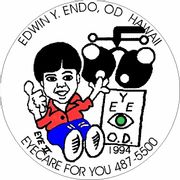What Is Computer Vision Syndrome & How Is It Treated?

Between laptops, tablets, and smartphones, it’s hard to avoid digital screens in the modern world. But while these devices are helpful in many respects, using them for prolonged periods of time can cause a group of eye problems known as computer vision syndrome. Also known as digital eye strain, this condition is common among office workers, school children, and any other person who may rely on digital devices. To help you better protect your eyes and use technology with confidence, here are a few important facts to know about computer vision syndrome—and how to treat it.
What Causes Computer Vision Syndrome?
Staring at a digital screen for extended periods requires the eyes to remain focused in a fixed position. Most people also blink less frequently during screen use. Over time, this intense focus can cause the eye muscles to become strained. This result may even be more pronounced in individuals who already have a pre-existing vision problem—such as nearsightedness or farsightedness.
While prolonged screen use is the main culprit behind computer vision syndrome, there are many other factors that can intensify symptoms. For example, poor lighting, improper monitor positioning, and glare can all contribute to the problem.
How Can You Tell You Have Computer Vision Syndrome?
 Eye strain and headaches are the most common symptoms of computer vision syndrome. While temporary, this pain and soreness develops due to muscle tension around the eyes and will usually dissipate with rest.
Eye strain and headaches are the most common symptoms of computer vision syndrome. While temporary, this pain and soreness develops due to muscle tension around the eyes and will usually dissipate with rest.
Blinking at a slower rate while using digital devices can also make it difficult for your eyes to stay lubricated, resulting in dry eyes and blurry vision. Remaining in a fixed position can also contribute to shoulder and neck pain.
How Can You Treat It?
Optimizing your desk ergonomics, using proper lighting, and taking breaks to rest your eyes during screen use are all effective ways to prevent computer vision syndrome from occurring. However, if you still have discomfort while using digital devices, it’s best to visit an eye doctor for treatment.
Depending on the nature of your symptoms, your provider may recommend the use of prescription glasses that are designed to help filter out light from screens. Individuals who have problems adjusting their focus may also benefit from vision therapy that helps retrain eye movement.
If screen usage is causing problems with your sight, Edwin Y. Endo, OD & Associates can help you find relief. Providing comprehensive eye care services on Oahu, Dr. Endo and his team can diagnose ocular conditions—including computer vision syndrome—and provide corrective treatment. Serving patients of all ages, this Aiea optometrist is a convenient and affordable resource for both young students and adult professionals who want to see better in their daily lives. For more details on their services, visit this award-winning clinic online. To schedule an eye exam, call a friendly team member at (808) 487-5500.
About the Business
Have a question? Ask the experts!
Send your question

